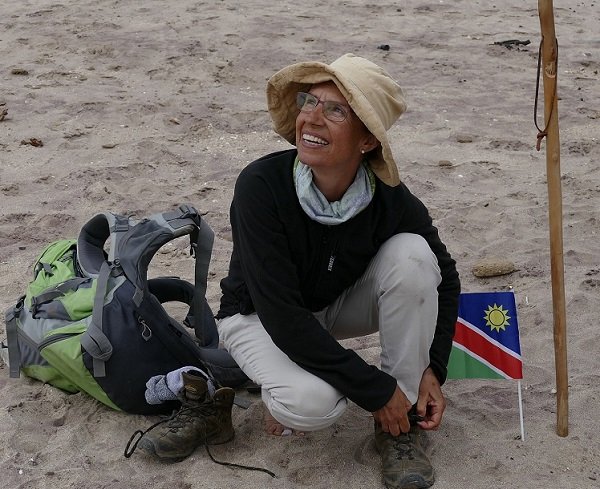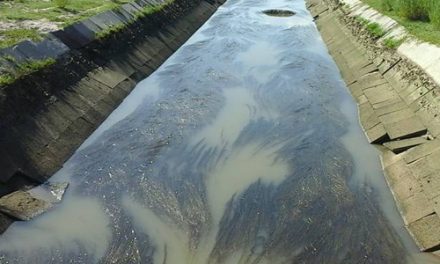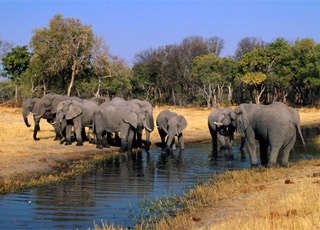
Traversing the Swakop from source to sea – a life’s dream for a lone wanderer

After walking for almost a month, a woman in her late forties arrived in Swakopmund in the last week of May this year, having covered the entire 462 kilometre length of the Swakop river on foot.
For Nikola Fahrbach, this accomplishment was the fulfillment of a life’s dream. Passionate about nature, she made it her personal goal to traverse the Swakop river from source to ocean, using only her own strength for ambulation.
Preparations for the arduous journey started a year earlier. Since the river runs in many areas through private land, she had to contact all the farmers along the way for permission to cross. She also had to coordinate logistics with her support team with whom she rendezvoused late every afternoon for her camping and cooking gear. On herself, she carried only water and snacks for the 20 km or so she covered per day.
Finally, everything was ready and she arrived at Midgard where the river starts in the surrounding mountains, on a Friday. The next day, Saturday 28 April she started her epic trek. During the first two days, still on her way to Okahandja, she found sometimes she had to walk on the river’s bank, where the bush and grass were very dense, and sometimes she had to walk in the riverbed where the sand drained her strength.
Manmade obstacles like von Bach and Swakkoppoort she had to circumvent, and natural obstacles like steep rocks and gorges, she had to find a way through or around.
When she reached Otjimbingwe, a large group of people from the community came out to greet her. She paused for a while, sharing her incredible experience with the residents. A woman remarked wisely that walking the Swakop was what Nikola’s heart told her and this is exactly what she was doing – listening to her heart. At this point she was just under two weeks into her cross-country walk. This was also the last time she would see civilisation for the next two weeks.
One skill she had to master was to scale fences. At this she became very adept, quickly learning the easiest way to get through a fence with a sack on her back. “Every day there was a highlight. The personal encounters from people I came across along the way were special, encouraging and very enriching,” she said.
During the entire walk, she never encountered any dangerous animal but had more than enough opportunity to observe game of all sorts, which she said, basically ignored her. Only now and then did the odd inquisitive baboon noticed her and scattered.
During the Namib stage she had the most unbelievable experience. It started raining and she became completely drenched. It was also icy cold, so that afternoon she enjoyed her fire more than the usual. During the day she only carried basic rations and water.
“The rest of my camping equipment came every evening with various adventurers who supported me throughout the journey. They took this trip very seriously and it motivated me to keep going. I felt secure, humbled and protected. I am very thankful for their support and will never forget these individuals who believed in and supported my dream,” she said.
“It was a very emotional and joyful moment. I will always remember my wonderful ‘Groot Stap’ for the rest of my life. Thank you to everyone that helped me achieve this,” she said.
Contrary to what one may expect, she is not a safari guide or a professional hunter, she works for the Capricorn group in a financial position.












































